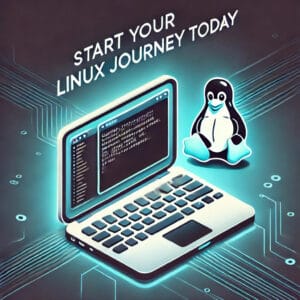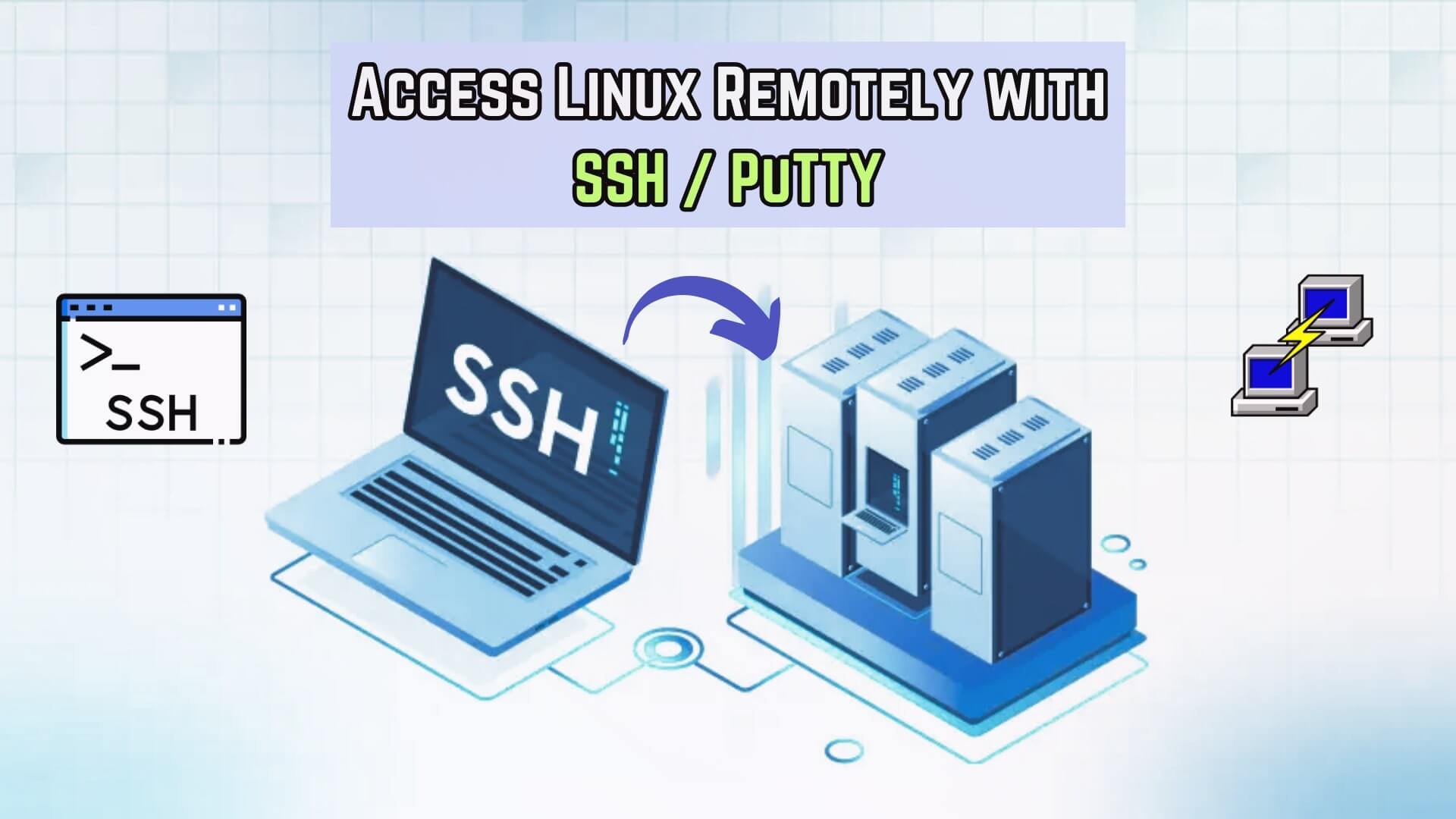Linux Basics for Beginners: Linux powers 90% of the world’s cloud infrastructure and all of the top 500 supercomputers. Whether you’re aiming to boost your tech career or simply understand the world’s most powerful operating system, learning Linux is more important than ever. In this guide, we’ll break down the top 8 Linux concepts you need to know, why Linux skills are in high demand, and how mastering this OS can open doors to high-paying job opportunities.
Why Learning Linux Matters in 2025
Linux is integral to almost every area of technology, and its demand is skyrocketing. As we move into 2025, mastering Linux could significantly enhance your career prospects, whether you’re eyeing a tech role or expanding your skills.
Here’s why:
Cloud Engineering (AWS, Azure, GCP)
Linux is the backbone of cloud platforms like AWS, Azure, and Google Cloud. If you’re aiming for a career in cloud engineering, understanding Linux is essential for managing and maintaining cloud environments.
Cybersecurity and Ethical Hacking
Linux is key to ethical hacking and cybersecurity. Many of the tools used to secure systems are Linux-based, and its open-source nature allows security professionals to inspect and defend systems in-depth. As cyber threats grow, Linux skills are crucial for keeping data secure.
System Administration
System admins keep servers running smoothly. Since most servers worldwide rely on Linux, knowing the OS is a must for anyone in IT system administration.
DevOps and Automation
Linux is at the heart of DevOps and automation. DevOps professionals use Linux to build, deploy, and automate systems. Understanding Linux is invaluable for working in CI/CD pipelines and systems automation.
Web Development and Hosting
Linux is the preferred OS for web hosting. If you work in web development, understanding how to configure and maintain Linux servers will give you an edge in hosting environments.
Android Development
Android is built on Linux. If you’re developing Android apps or working with Android devices, a strong understanding of Linux is essential for debugging, testing, and customization.
Why Linux Equals High-Paying Jobs
As demand for Linux skills continues to rise, so do the salaries. For instance, Linux administrators make an average of $90,000 per year—a figure that grows with expertise. From cloud engineers to cybersecurity specialists, Linux knowledge is crucial for many high-paying tech roles.
Where You Encounter Linux Every Day
🌍 The Internet
Linux powers 96.3% of the top 1 million web servers (W3Techs), handling everything from hosting websites to running cloud applications.
📱 Your Pocket
Android, which is based on Linux, powers 72% of the world’s smartphones. So, whether you’re browsing or using apps, Linux is working behind the scenes.
☁️ Cloud Computing
Linux is the foundation of cloud services like AWS, Azure, and Google Cloud. It’s the OS behind storage solutions, virtual machines, and hosting environments, and its role will only grow as cloud adoption increases.
A Brief History of Linux
Linux Basics for Beginners: What is Linux?
Linux is more than just an operating system; it’s an ecosystem that combines multiple components:
The Kernel
The core that manages hardware resources and acts as the intermediary between the system and physical devices.
GNU Tools
Essential utilities like bash, grep, and others that allow interaction with the system via the command line.
Distributions (Distros)
Different versions of Linux tailored for various needs. Some distros, like Ubuntu and Fedora, focus on ease of use, while Debian and CentOS prioritize stability for servers.
Linux vs. Unix: Key Differences
| Feature | Linux | Unix |
|---|---|---|
| Cost | Free and open-source (no licensing fees) | Expensive licensing fees (vendor-specific) |
| Hardware Support | Can run on virtually any hardware, from PCs to embedded devices | Typically tied to specific hardware platforms (e.g., Oracle or IBM) |
| Development | Open-source, community-driven, frequent updates | Closed-source, controlled by vendors, updates vary by provider |
| Security | Fast patching via community and distribution maintainers | Vendor-specific patches, slower response times |
| Usage | Used in personal computing, servers, mobile devices, embedded systems, cloud platforms | Primarily used in enterprise environments (mainframes, servers) |
| Customizability | Highly customizable; anyone can modify the source code | Limited customization due to proprietary nature |
| Command Line Interface (CLI) | Robust and essential for most interactions | Unix also offers CLI, but often with vendor-specific variations |
| Examples | Ubuntu, CentOS, Debian, Red Hat, Fedora, Arch Linux | Solaris, AIX, HP-UX, IBM’s z/OS |
| File System | Ext4, Btrfs, XFS, and others available | UFS (Unix File System), ZFS (in Solaris) |
| System Management | Tools like apt, yum, pacman, systemd, and dmesg | Vendor-specific tools like pkgadd, svcs, psrinfo |
| Performance | Very efficient, lightweight (especially for server environments) | High performance, optimized for specific hardware and enterprise needs |
Tip: Start with Linux. It’s more widely used and offers easier access to resources, making it a great entry point into the world of Unix-like systems.
Choosing Your First Linux Distribution
The right distribution (distro) depends on your goals. Here’s a breakdown to help you decide:
For Beginners
- Ubuntu: User-friendly and well-supported, perfect for newcomers.
- Linux Mint: Offers a traditional desktop experience and is based on Ubuntu.
- Zorin OS: Tailored for users transitioning from Windows.
For Servers
- CentOS: A stable, enterprise-grade distro for server environments.
- Debian: Known for its reliability and security.
- Red Hat Enterprise Linux (RHEL): A commercial option with enterprise support.
For Security Enthusiasts
- Kali Linux: Ideal for penetration testing and ethical hacking.
- Parrot OS: A privacy-focused security distro.
- Tails: Designed for privacy, leaving no trace on the system.
Who Uses Linux?
Linux is at the core of many leading companies and organizations:
These companies aren’t just using Linux—they’re actively hiring professionals skilled in it. With the right expertise, you could land high-paying roles as a system administrator, cloud engineer, or DevOps specialist.
Linux Filesystem Cheat Sheet
Understanding the Linux filesystem is crucial for managing and navigating your system. Here are the key directories:
/homePersonal files and user data.
/etcSystem-wide configuration files.
/varVariable files like logs and email.
/binEssential system commands.
/usrUser programs and applications.
/tmpTemporary files created by the system and applications.
Use the ls / command to view top-level directories in your system.
Linux vs. Windows: Key Differences
| Feature | Linux | Windows |
|---|---|---|
| Cost | Free and open-source | Requires a paid license (Home, Pro, Enterprise versions) |
| Security | More secure by design; frequent community-driven updates and patches | More prone to malware and attacks; slower update cycles |
| Software Availability | Most software is open-source, but some commercial software is unavailable | Wide availability of commercial software (e.g., MS Office, Adobe) |
| Customization | Highly customizable, open-source nature allows for complete control | Limited customization, closed source, and proprietary |
| User Interface | Primarily command-line-based (CLI); GUIs available (e.g., GNOME, KDE) | Graphical User Interface (GUI) is the standard |
| Development | Preferred OS for developers, with extensive support for programming languages and tools | Popular for .NET developers, but less favored for general development |
| Performance | Lightweight and faster on older hardware or resource-constrained environments | Requires more resources; tends to slow down on older hardware |
| System Management | Managed via terminal-based tools, scripts, and package managers (e.g., apt, yum) | Managed via graphical interfaces (e.g., Control Panel, Settings) |
| Command Line Interface (CLI) | Essential for most operations, powerful shell commands (bash, zsh, etc.) | Command Prompt and PowerShell, but less robust for complex tasks |
| File System | Ext4, Btrfs, XFS; highly configurable and suitable for various use cases | NTFS (read-write); FAT32, exFAT (for compatibility with external drives) |
| Gaming | Limited game support, but growing (via Steam, Wine, etc.) | Best platform for gaming, with native support for most games |
| Support for Hardware | Support for most hardware, but may require additional drivers for some proprietary devices | Excellent out-of-the-box support for a wide range of hardware, especially peripherals |
| Virtualization | Excellent support for virtualization tools like Docker, KVM, VirtualBox | Built-in virtualization via Hyper-V, but more resource-heavy |
| Cloud & Server Use | Dominates web hosting, cloud infrastructure, and enterprise servers | Often used in enterprise environments for desktop and server applications (Windows Server) |
| Updates | User-controlled; updates via package managers or rolling-release systems (e.g., Arch) | Automatic updates with less control over timing and frequency |
Decision Guide: Use Linux for development, server management, and performance-focused tasks. Opt for Windows for casual use and gaming.
Conclusion: Master Linux for Future-Proof Careers
Learning Linux is no longer optional for tech professionals. With its widespread use across industries like cloud computing, cybersecurity, and DevOps, Linux skills are in high demand. By mastering Linux, you position yourself for high-paying roles and access to some of the most influential companies in the tech world.
Start your journey today—whether by diving into Ubuntu, exploring security tools in Kali Linux, or simply gaining hands-on experience with the terminal. Linux is your gateway to a bright tech future in 2025 and beyond.
Next Steps in Your Linux Journey

- Install Linux on your computer or try it in a virtual machine.
- Practice basic commands (ls, cd, mkdir, etc.).
- Explore the file system structure.
- Learn to install software using the package manager.
For a hands-on start, follow our
step-by-step VirtualBox and CentOS installation guide.
“The Linux Command Line“
by William Shotts (free PDF available) for deeper study.
FAQ
Can Linux be used for gaming?
Yes, Linux supports gaming through native games, compatibility layers like Proton, and platforms such as Steam, which offer a variety of games compatible with Linux.
What is a Linux distribution (distro)?
A Linux distribution is a version of the Linux operating system that includes the kernel, system utilities, applications, and package management, tailored for specific user needs.
Can I run Windows applications on Linux?
While Linux doesn’t natively support Windows applications, tools like Wine and virtual machines can enable users to run Windows software on Linux systems.
Is Linux free to use?
Yes, most Linux distributions are open-source and free to use, allowing users to download, modify, and distribute the software without cost.







